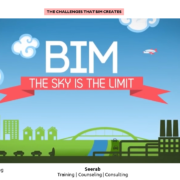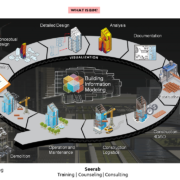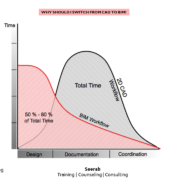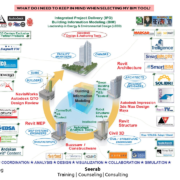The challenges that BIM creates
For all its benefits, BIM brings new challenges around creating and collaborating on models:
- Taking the model beyond the design team – The true value of BIM can only be realized when it is taken beyond the design team – to subcontractors, the owner and facility manager. Providing access to the model and allowing them to contribute and link other information are key.
- Viewing the model (including in the field) – How can a subcontractor be given a view of a particular part of the model to resolve an issue without having to download and install software? How can people collaborate around that view quickly and easily? How can they view it on the tablet when standing on the site?
- Linking models to other data – A lot of project information, like drawings, RFIs and spec sheets, lives outside the model. How can these documents be linked for a more complete model? Owners may insist on receiving a 3D model but, for the full picture, it should be linked to all of the other data created and collated on the project.
- Tracking approvals and audit trails – Models are generated by different authoring tools and constantly changing, making it difficult to obtain and record approvals. With hundreds of decisions made around the model during its life, maintaining an audit trail of who did what and when can be almost impossible.
- Managing large file sizes – When BIM models can easily reach 50MB or more, distributing files securely and efficiently can be difficult, if not impossible. E-mail can’t handle the file sizes and FTP sites don’t provide the access control or audit trail you need.
- Model management – Typically, people on a project work with different authoring tools. The BIM Manager then compiles and distributes the federated model. This might happen on a weekly cycle, which can be too slow for a fast-moving project. Allowing each party to contribute its model as needed, while others access the information in real time, makes BIM more valuable to everyone.
- Dealing with long review cycles – Clash resolution usually takes place at set intervals, such as weekly or twice a month. But this creates a lag, where somebody addressing a clash has to wait for a whole cycle to complete before knowing whether it has been fixed or not. Immediate, real-time resolution of clashes is required.
- Publishing slices of models – No matter how advanced your 3D modeling is, there is still the requirement to publish, distribute and track the 2D plans which are needed for set-out and construction.
- Archiving point-in-time models – Even when a 3D software package can track changes, there still needs to be a way to save point-in-time models for sign-off and approval purposes.
- Handover of a complete and accurate model – Owners want to receive a full set of information to run their facility. And contractors and consultants want to be sure they have met their contractual requirements in order to get paid. So understanding when this point has been reached is in everyone’s interest.
#Building Information Modeling #BIM #CAD






